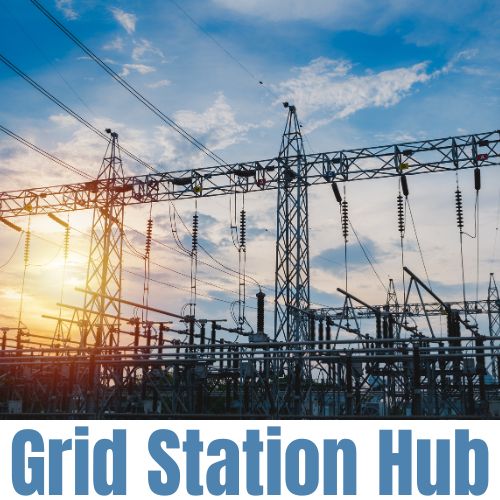An electrical grid station, also known as a substation, is a facility that serves as a node in an electrical power transmission and distribution system. It is responsible for receiving high-voltage power from the generating station and transforming it into lower voltages that can be distributed to end-users.

Function of a grid station
The primary function of a grid station is to regulate and control the flow of electrical power in the grid, as well as to protect the system from faults and overloads. It contains a variety of electrical equipment, such as transformers, switchgear, circuit breakers, and protection devices, which are used to manage the voltage and current levels and ensure the safe and reliable operation of the grid.
Transformers
Transformers are among the most critical components of an electrical grid station. They are used to step up or step down the voltage of the electrical power being transmitted over long distances. High voltage transmission is used to minimize power losses during transmission, while lower voltages are used for distribution to consumers. Transformers work by using the principles of electromagnetic induction, which allows electrical energy to be transferred from one circuit to another. The efficiency and reliability of transformers are critical to ensuring a stable and uninterrupted supply of electrical power.
Circuit Breakers
Circuit breakers are another important component of an electrical grid station. They are used to protect the system from overload conditions, which can cause damage to equipment and result in power outages. Circuit breakers are designed to detect abnormal current flows and trip when necessary to isolate the faulted circuit. They are also used to protect workers from electrical hazards during maintenance or repair operations.
Disconnect Switches
Disconnect Switches are used to control the flow of electrical power through the system. They can be manually operated or automated, depending on the specific application. Disconnect Switches are essential to ensuring a safe and reliable supply of electrical power, as they allow for the isolation of faulty equipment or the rerouting of power to alternative circuits.
Control Devices
Control devices are used to monitor and control the operation of the electrical grid station. They include various sensors and communication devices that allow operators to monitor the status of the system and make adjustments as necessary. Control devices are critical to ensuring the efficient and reliable operation of the electrical grid station, as they allow for the early detection of faults or abnormalities that could result in power outages.
In addition to these components, an electrical grid station may also include various other equipment and infrastructure, such as power lines, substations, and communication systems. Power lines are used to transmit electrical power from the generation source to the grid station, while substations are used to distribute power to consumers. Communication systems are used to transmit data between the various components of the electrical grid station, allowing for remote monitoring and control of the system.
The design and operation of an electrical grid station are governed by various standards and regulations to ensure the safety and reliability of the system. These standards cover various aspects of the system, including the design and construction of equipment, the operation and maintenance of the system, and the training and certification of personnel.
Grid stations may also include auxiliary systems such as cooling, heating, lighting, and communication systems, which are necessary to support the operation of the electrical equipment.


